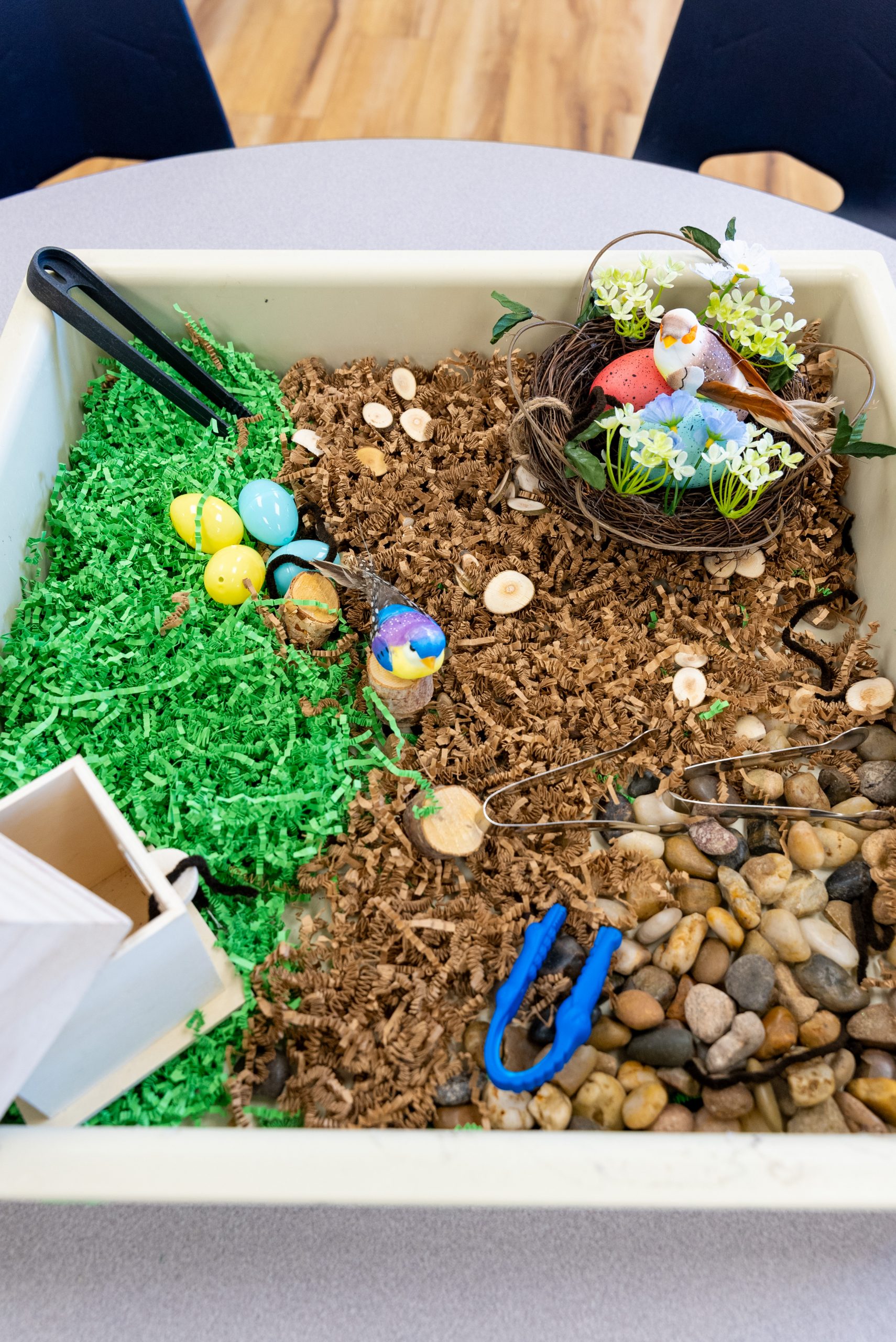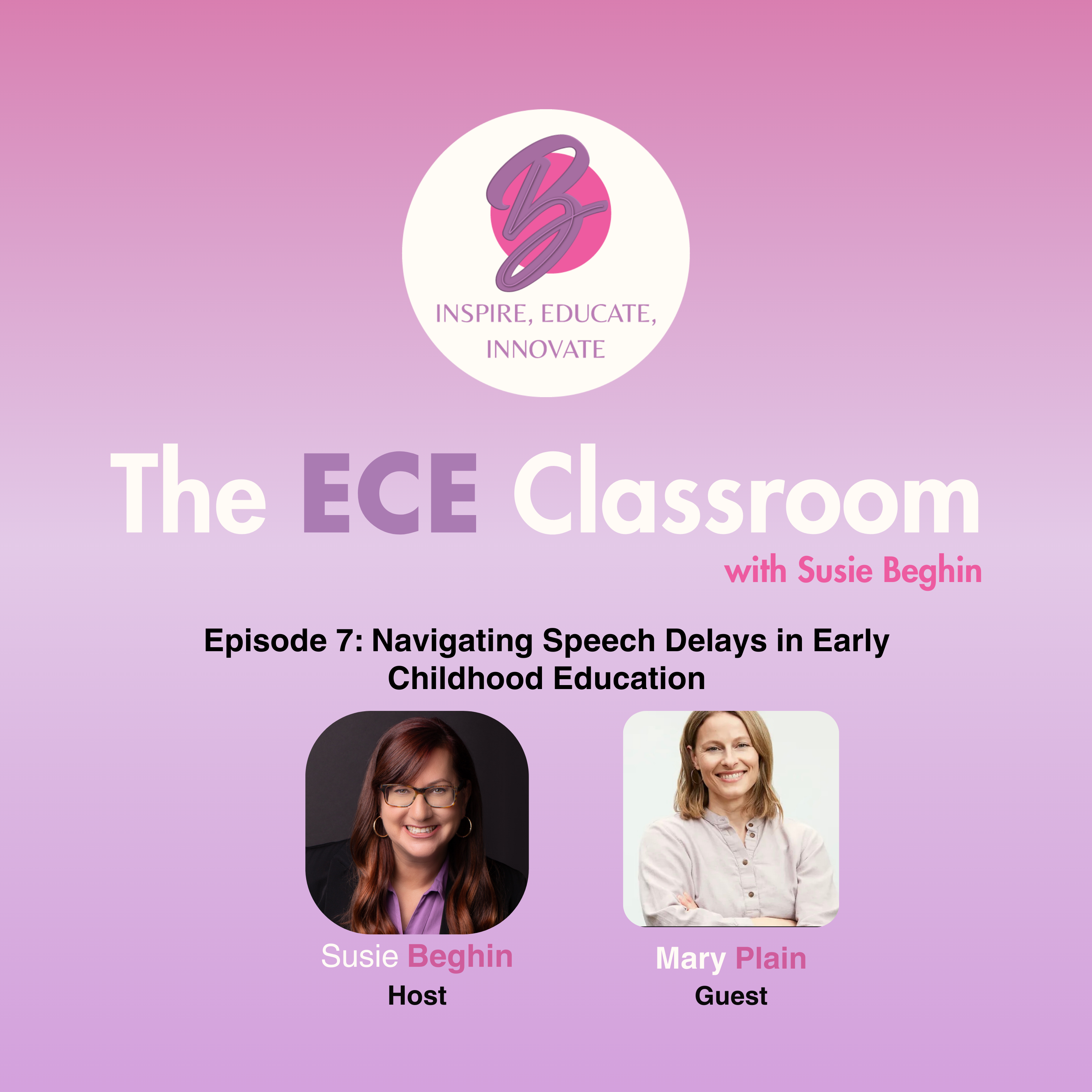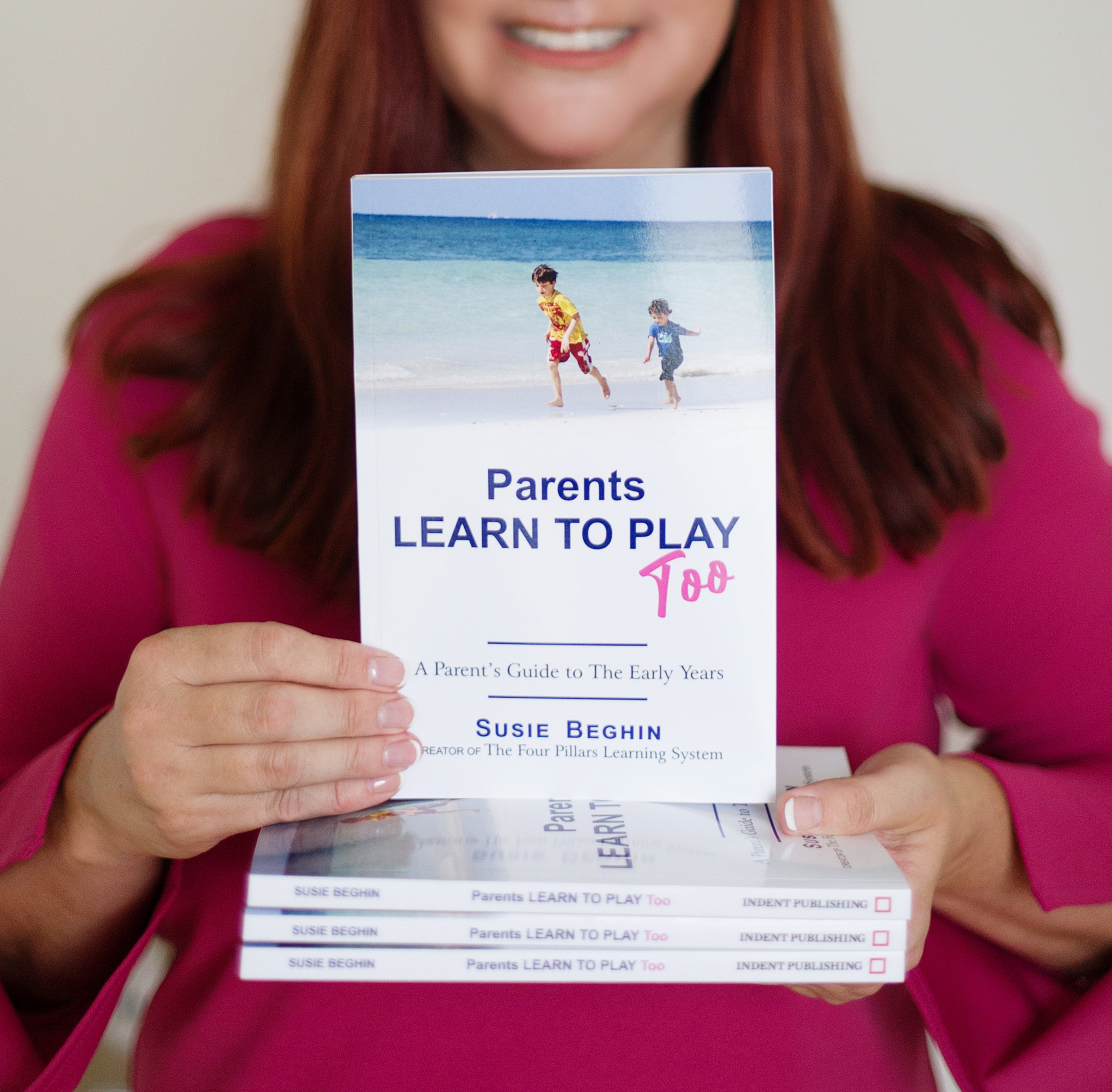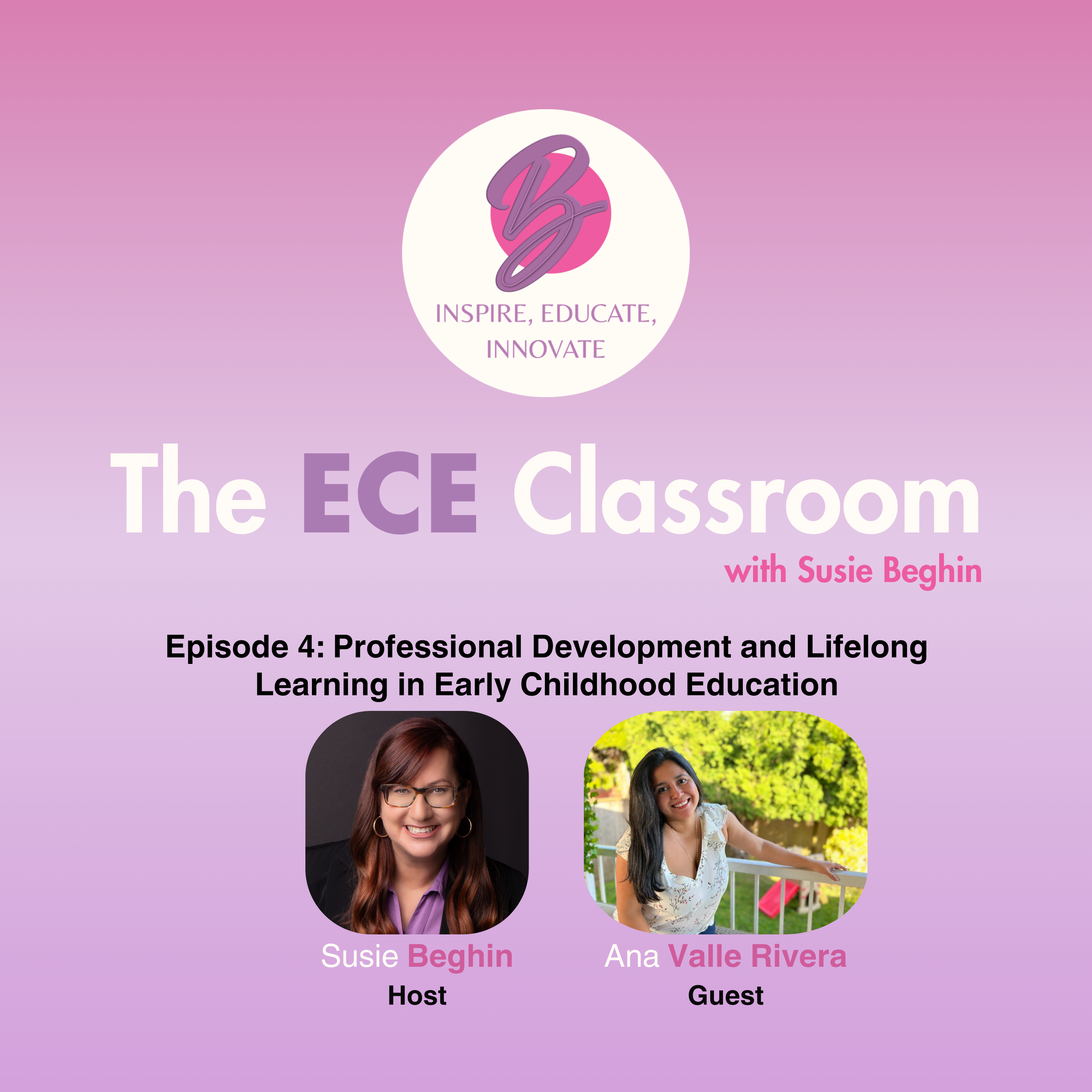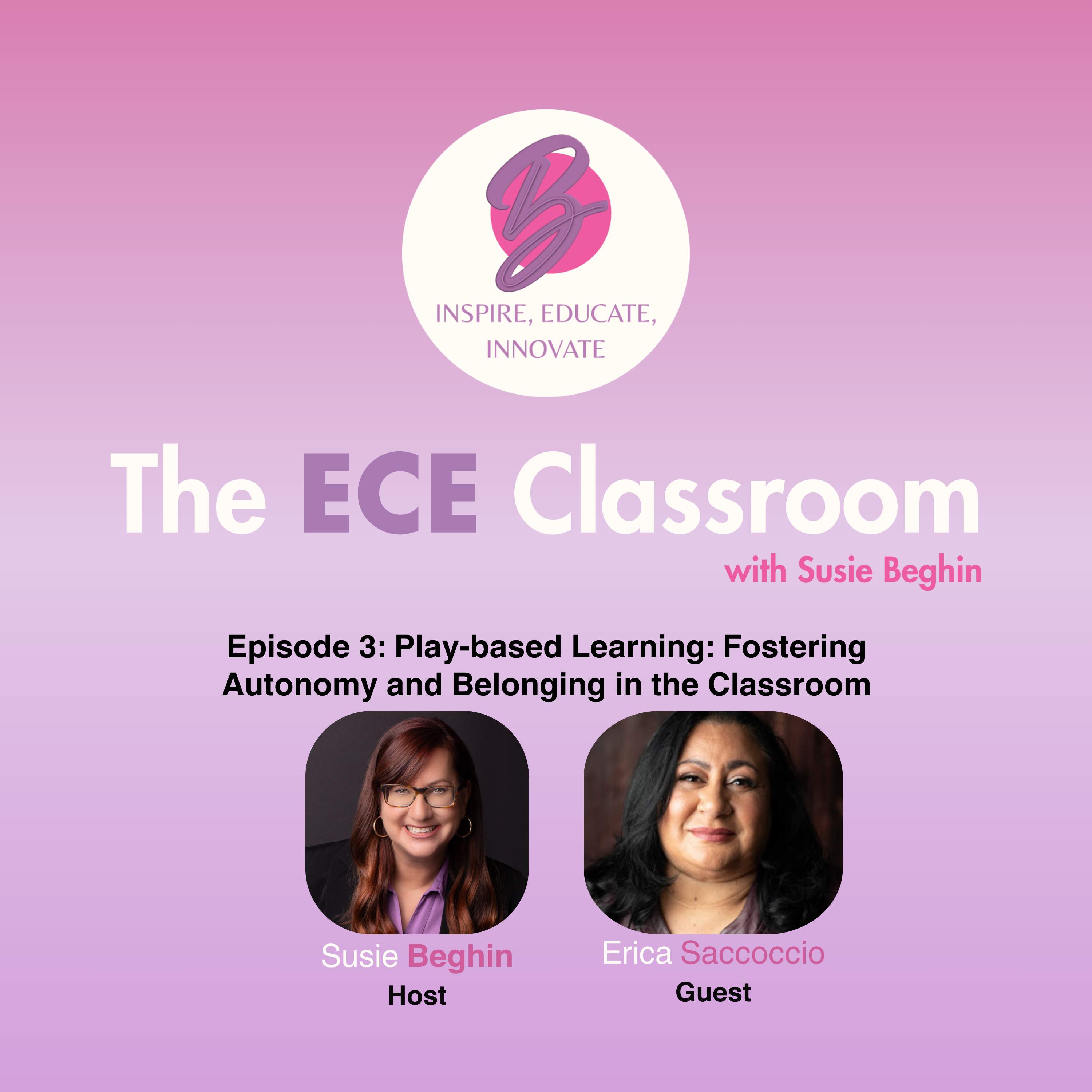April Showers Bring May Flowers: Rainy Day Play Ideas for Toddlers
April Showers Bring May Flowers: Rainy Day Activity Ideas for Toddlers
April’s rainy days don’t have to mean boredom for your little ones! While the wet weather may keep you indoors, it also provides the perfect opportunity to engage in fun and educational activities with your toddler. Here are some playful and enriching ways to make the most of rainy days while supporting your child’s learning and development.
- Indoor Obstacle Course 🏃♀️
Turn your living room into an exciting adventure course! Use pillows, chairs, cardboard boxes, and blankets to create a safe obstacle path. Crawling through boxes, jumping over cushions, and balancing on a tape line can enhance gross motor skills and coordination while keeping toddlers active indoors.
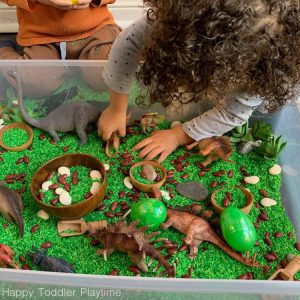
- Sensory Bin Fun 🌈
Bring a little bit of nature inside with a rainy-day sensory bin. Fill a plastic container with items like water beads, rice, or kinetic sand and add toy animals, measuring cups, and scoops for hands-on exploration. Sensory play helps with fine motor skills and cognitive development, while also providing a calming experience.
- DIY Rain Art 🎨
Take advantage of the rain by creating a fun science-meets-art activity! Let your child color on coffee filters with washable markers, then place them outside in the rain for a few moments to watch the colors blend and swirl. Once dry, you’ll have a beautiful, one-of-a-kind piece of art to display.

- Storytime Fort 📚
Build a cozy reading nook using blankets and pillows, then snuggle up for a storytelling session. Choose books with a rainy-day theme, such as The Rainy Day by Anna Milbourne or Raindrop, Plop! by Wendy Cheyette Lewison. Storytime helps build language skills, comprehension, and imagination.
- Bake Together 🍪
Turn your kitchen into a mini baking studio! Simple recipes like banana muffins or homemade granola bars offer a fun and tasty way to teach early math and science skills through measuring, mixing, and pouring. Plus, baking together encourages patience and following instructions.

- Puddle Play (With Proper Gear!) ☔
If the rain isn’t too heavy and it’s safe to go outside, embrace the weather! Dress your little one in rain boots and a waterproof jacket, then go outside for some good old-fashioned puddle jumping. This activity strengthens motor skills and allows for a fun sensory experience while enjoying nature’s wonders.
- Indoor Picnic 🧺
Bring the fun of an outdoor picnic inside! Lay out a blanket in your living room and enjoy lunch in a new setting. Pretend play like this fosters creativity and imagination while making mealtime more exciting.

- Water Play in the Sink 💦
If your child loves playing with water, set up a “kitchen sink ocean.” Fill the sink with warm water, add some floating toys, cups, or a small colander, and let them explore pouring and splashing. Water play is a great way to encourage problem-solving and sensory exploration.
Final Thoughts 🌟
Rainy days don’t have to be dreary! With a little creativity, they can become magical opportunities for exploration, discovery, and connection. Whether you’re jumping in puddles, baking together, or enjoying a cozy book nook, these activities will keep your toddler engaged, learning, and having fun—rain or shine!
Follow Susie Beghin on Instagram or visit her website for more activity Ideas.
About the Author
Susie Beghin – Early Childhood Education Expert & Creator of the Raising Bright Early Learners System
Susie Beghin is a Registered Early Childhood Educator (RECE), author, and early childhood education thought leader dedicated to helping parents and educators give young children the best start in life. As the founder of the Raising Bright Early Learners System, Susie has developed a comprehensive program designed to empower stay-at-home moms and caregivers with the tools and confidence to provide high-quality early learning experiences at home.
With 20+ years of experience as a daycare owner and Founder of Alpha’s Discovery Kids Preschool and Daycare, and mom of a child with ADHD/autism, Susie understands the challenges parents face when it comes to early childhood education. Her expertise in STEAM-based learning, play-based education, and child development has allowed her to create a system that is both accessible and impactful for parents looking to nurture their child’s curiosity and cognitive growth.
Through her book, Parents Learn to Play Too, her popular ECE Classroom podcast, and hands-on training programs, Susie bridges the gap between professional early childhood education and practical, everyday parenting. The Raising Bright Early Learners System is built on the principles of inquiry, discovery, and exploration, helping parents create engaging learning environments that spark a lifelong love of learning in their children.
Whether through social media content, workshops, or personalized coaching, Susie is committed to making early learning simple, fun, and effective for families everywhere. Join her mission to raise bright early learners and feel confident in your child’s learning journey from the very start!
4 Easy Spring Sensory Play Ideas for Toddlers and Preschoolers
4 Easy Spring Sensory Play Ideas for Toddlers and Preschoolers
by Susie Beghin
Spring is a magical time for young children. The world is waking up, flowers are blooming, and new life is sprouting everywhere. It’s the perfect season to engage kids in sensory play — helping them explore the world through touch, smell, sight, sound, and even taste! Sensory play encourages discovery and inquiry, building essential skills like fine motor development, problem-solving, and language growth.
In this blog, I’ll share some fun and easy spring sensory play ideas, including creative gardening activities to get your little ones excited about the season.

🌱 1. Planting and Gardening Sensory Bins
Gardening is one of the best hands-on sensory experiences for kids. The feel of soil between their fingers, the smell of fresh herbs, and the sight of tiny green shoots create a rich sensory experience.
What You’ll Need:
- A shallow bin or tray (or sensory bin)
- Potting soil
- Small plastic pots
- Small gardening tools (like a spade or trowel)
- Seeds (like beans, sunflowers, or herbs)
- Small flowers
- Watering Can
How to Do It:
- Fill the bin with soil and let your child dig and explore.
- Encourage them to plant seeds and cover them with soil.
- Let them use a spray bottle to water the seeds.
- Observe how the seeds begin to sprout over the next few days.
Learning Boost: Talk about what plants need to grow (sunlight, water, soil) and introduce simple science terms like “germination.”

🌸 2. Flower Petal Sensory Soup
This colorful activity combines touch, sight, and smell for a multi-sensory experience.
What You’ll Need:
- A shallow bin, bowl or tray (or sensory bin)
- Water
- Flower petals (real or fake)
- Spoons, ladles, and small cups
How to Do It:
- Fill the bowl with water and add the flower petals.
- Let your child stir, scoop, and pour the “soup.”
- Encourage them to describe how the petals feel and smell.
Learning Boost: Introduce color names and texture words like “soft,” “smooth,” and “fragrant.”
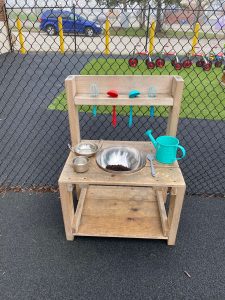
🌼 3. Mud Kitchen
Let your child engage in messy play by creating a “mud kitchen” outdoors.
What You’ll Need:
- Dirt
- Water
- Old pots, pans, and kitchen utensils
- Leaves, grass, and flowers
How to Do It:
- Set up an outdoor play area with mud and kitchen tools.
- Encourage your child to mix mud “recipes” using leaves and flowers.
- Let them squish, mold, and pour the mud to create different textures.
Learning Boost: Discuss the difference between wet and dry mud and how adding water changes the texture.
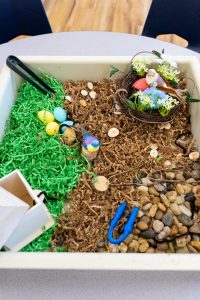
🦋 4. Birds Exploration
Spring is a busy time for birds as they make their nests! Encourage kids to observe and explore these creatures and then create a bird sensory exploration indoors.
What You’ll Need:
- Shredded paper (green and brown)
- Bird’s nest and or bird house (you can make the nest or house as a craft activity with pieces of twigs or buy it from the dollar store)
- Toy birds
- Small toy eggs (plastic)
- Feathers
- Wood pieces (twigs and small wood cutouts)
- Brown yarn cut in small pieces (worms)
- Tweezers
How to Do It:
- Arrange a combination of green and brown paper on the bottom of the bin. Place the house and nest in the bin.
- Scatter the yarn worms around the paper and hide some underneath the “grass”.
- Place the eggs in the nest as well as the birds.
- Encourage your child “feed” the birds by using the tweezers to pickup the worms and feed them to the birds.
- Encourage open-ended play with your bird habitat.
Learning Boost: Discuss how birds make nests and take care of their young.
🌷 Why Sensory Play Matters
Spring sensory play helps children develop:
✅ Fine motor skills (through digging, pouring, and stirring)
✅ Language skills (by describing textures and smells)
✅ Cognitive growth (by observing plant growth and understanding natural cycles)
✅ Emotional regulation (sensory play is calming and helps reduce stress)
Spring is the perfect time to encourage discovery and exploration through sensory play. These simple but meaningful activities will spark your child’s natural curiosity and help them connect with the world around them.
For more ideas like this, visit YouTube !
7 Valentine’s Day-Themed Activities for Preschoolers
Love, Learning, and Little Hands: 7 Valentine’s Day-Themed Activities for Preschoolers
February is the perfect time to blend love and learning with engaging, hands-on activities. Learning through play fosters curiosity, creativity, and confidence in young children. This blog will explore STEAM, fine motor, sensory, literacy, and math activities—all with a Valentine’s Day twist!
STEAM Exploration: Science

1. Fizzing Heart Science
- Materials: Baking soda, water, vinegar, heart-shaped cookie cutters, food coloring
- Exploration: Mix baking soda with pink/red colored water, shape it into hearts using the cookie cutter. Let it dry and then drop it on a plate of vinegar and watch it fizz!
- Learning: Introduces simple chemical reactions and cause-and-effect.
2. Floating Hearts – A Surface Tension Experiment
- Materials: Dry-erase markers, white ceramic plate, water, straw or spoon
- Exploration: Draw small hearts on the plate with a dry-erase marker. Slowly pour a small amount of water onto the plate. Watch as the hearts lift off and float! Use a straw or spoon to gently move them around.
- Learning: Introduces kids to surface tension and water resistance. Encourages observation and prediction in a fun, hands-on way.
Fine Motor Fun: Strengthening Little Hands

3. Heart Threading Garland
- Materials: Yarn, hole-punched paper hearts, plastic needle
- Exploration: Encourage kids to thread paper hearts onto yarn to create a festive garland.
- Learning: Develops hand-eye coordination and fine motor control.
4. Valentine’s Day Playdough Invitation
- Materials: Pink/red playdough, heart-shaped cookie cutters, buttons, beads
- Exploration: Let kids press, roll, and shape the dough into fun Valentine’s-themed designs.
- Learning: Supports creativity and strengthens finger muscles for pre-writing skills.
Sensory Play: Engaging the Senses

5. Valentine’s Sensory Bin
- Materials: Dyed rice (red/pink) or pink/red shredded paper, heart-shaped objects, foam hearts, scoops, small containers
- Exploration: Let kids scoop, pour, and sort items in the bin.
- Learning: Encourages sensory exploration, sorting, and fine motor skills.
Literacy and Math Exploration
6. Heart Letter-Matching Game
- Materials: Paper or foam hearts with uppercase and lowercase letters
- Exploration: Cut hearts in half with one side having the uppercase letter and the other half with the matching lowercase letter. Kids match uppercase and lowercase letters to complete the heart.
- Learning: Reinforces letter recognition and early literacy.
7. Counting Hearts Game
- Materials: Paper hearts with numbers, small manipulatives (pom-poms, beads)
- Exploration: Children place the correct number of manipulatives on each numbered heart.
- Learning: Develops number sense and one-to-one correspondence.
Incorporating Valentine’s Day into learning offers a great opportunity to foster inquiry, discovery, and exploration at home. These activities make learning fun and meaningful while strengthening early childhood skills. This is a great way to embrace playful learning and enjoy quality time with your little ones.
Winter Activities for Kids: 10 Fun Ways to Explore, Discover, and Learn This Season
Winter Activities for Kids: 10 Fun Ways to Explore, Discover, and Learn This Season
Winter is a magical time for kids, with snowflakes swirling, frost on windows, and a chill in the air. But it can also be a challenging time for parents and caregivers in cold climates, as kids are often cooped up indoors. However, winter offers endless opportunities for fun, exploration, and learning—both indoors and outdoors. Here are 10 engaging winter activities that encourage inquiry, discovery, and creativity.
Outdoor Winter Activities
- Snow Painting Bring out your child’s inner artist by filling spray bottles with colored water (just a few drops of food coloring mixed with water) and letting them paint the snow. This activity is not only fun but also encourages creativity and fine motor skills.
- Frozen Nature Hunt Head outside with a basket and search for natural items like pinecones, twigs, and leaves. Bring them home and place them in a shallow tray filled with water. Leave the tray outside to freeze overnight, creating a nature-themed ice sculpture. This is a great way to spark curiosity about the changing seasons. Take out a small hammer and a spray bottle with warm water and have your child try to get the items out of the ice!
- Bird Feeder Craft Make a simple bird feeder using pinecones, peanut butter, and birdseed. Hang the feeders outside and watch as winter birds come to visit. This activity promotes an interest in wildlife and nature.
Indoor Winter Activities
- DIY Snow Globes Help your child make their own snow globe using a clear jar, water, glitter, and small figurines. This craft activity enhances creativity while also teaching basic science concepts about liquids and solids.
- Snowflake Symmetry Art Cut out paper snowflakes and use them to teach kids about symmetry. Once the snowflakes are cut, let them decorate each half with different colors or patterns to highlight their symmetrical design.
- Winter-Themed Story Time Cozy up with a blanket and read winter-themed books together. Follow up the reading session with a creative storytelling activity where kids make up their own winter adventure. Storytelling helps develop language skills and imagination.
Sensory Winter Play
- Indoor Snow Play Bring the snow indoors by filling a large bin with clean snow. Add small toys, scoops, and containers for sensory play. If you don’t have snow, you can create fake snow using baking soda and water and freeze it until it is the consistency of snow.
- Frozen Treasure Hunt Freeze small toys or objects in a block of ice, then let your child “excavate” them using warm water, droppers, and small tools. This is a fun way to build fine motor skills and introduce basic science concepts like melting and temperature.
- Winter Sensory Bin Create a sensory bin with cotton balls, white pom-poms, and small winter-themed toys. Add scoops, tongs, and containers for kids to explore textures and practice their fine motor skills.
Winter STEM Challenges
- Marshmallow Igloo Building Provide mini marshmallows and toothpicks for kids to construct their own igloos. This hands-on activity encourages engineering skills and spatial thinking.
Winter is a season full of possibilities for learning through play. By encouraging kids to explore the world around them—even when it’s cold outside—you nurture their natural curiosity and creativity. Whether it’s experimenting with snow, exploring nature or crafting unique snowflakes, these activities create lasting memories while supporting your child’s development.
So bundle up, gather some supplies, and let the winter fun begin!
For more winter activities, subscribe to Susie Beghin’s YouTube channel or follow on Instagram or Facebook.
Navigating Speech Delays in Early Childhood Education
The ECE Classroom – Episode 7- Navigating Speech Delays in Early Childhood Education
by Susie Beghin, RECE, Founder of Alpha’s Discovery Kids
In a recent episode of the ECE Classroom Podcast, I had the pleasure of speaking with Mary Plain, a dedicated speech and language pathologist from Hello Speech. Together, we explored some of the most important aspects of speech and language development in early childhood education. Our conversation was filled with valuable insights for parents, educators, and speech therapists alike, including early identification of speech delays, the benefits of intervention, and practical strategies for supporting young children’s language development.
Why Early Identification of Speech Delays Matters
One of the primary topics we covered was the critical importance of identifying speech delays early. Mary highlighted that some signs of speech and language delays can start to show as early as 18 months. When caught early, these delays are more easily addressed, often preventing potential difficulties down the road in both communication and academics. Early childhood is a crucial period of brain development and language acquisition, so recognizing and addressing delays early on can make a big difference in a child’s ability to thrive.
As educators and parents, we’re often in the best positions to observe these early signs, which makes understanding what to look for essential. Noticing if a child has limited vocabulary, difficulty following instructions, or struggles with using gestures to communicate can be the first step toward intervention that sets them up for future success.
 Understanding the Difference Between Speech and Language
Understanding the Difference Between Speech and Language
During our conversation, Mary clarified an important distinction that’s often overlooked: the difference between “speech” and “language.” While we sometimes use these terms interchangeably, they actually refer to separate aspects of communication. Speech is about the verbal sounds children make, while language includes both verbal and nonverbal communication skills—such as gestures, expressions, and comprehension.
This distinction is important for educators and parents to grasp, as it helps us to better understand and identify which areas of communication a child might need help with.
Destigmatizing Speech and Language Services
A key point that Mary emphasized was the need to destigmatize speech and language services. Many parents may feel hesitant or embarrassed about seeking help for their child, but speech services are beneficial for children across a range of developmental stages. There is a common misconception that speech therapy is only for children with severe challenges, but it can support various aspects of language development, even when delays are mild or just emerging.
One of our responsibilities as educators is to encourage open, empathetic conversations with parents about their child’s development. By normalizing speech services as a regular part of a child’s educational journey, we can make parents feel more comfortable seeking support and reinforce that early intervention is often in their child’s best interest.
 Strategies to Support Language Development
Strategies to Support Language Development
Mary provided several practical strategies for educators and parents to support language development, which I found especially helpful:
- Use Visual Aids: Picture cards, illustrated schedules, and other visual supports help children follow routines and understand instructions, especially if they’re struggling with receptive language.
- Model Gestures and Expressions: Using clear gestures and facial expressions helps children associate meaning with spoken words, enhancing their understanding of verbal communication.
- Encourage a Total Communication Approach: This approach emphasizes the use of any available communication methods—words, gestures, and visual aids—allowing children to express themselves in ways that feel natural to them.
- Promote Both Receptive and Expressive Language: Receptive language is about understanding spoken language, while expressive language is about sharing ideas. Activities like storytelling, following instructions, and encouraging children to describe their thoughts can help strengthen both areas.
- Foster Peer Interactions: Structured play and group activities encourage children to use both verbal and nonverbal communication, building confidence in their language abilities.
The Impact of Early Intervention and Collaboration
A major takeaway from this episode is that early intervention has a significant positive impact on children’s lives. When children receive support early, they’re more likely to hit developmental milestones, which in turn boosts their confidence, academic success, and social skills. Early intervention not only benefits the individual child but also enhances the classroom environment by promoting inclusive communication strategies.
Final Thoughts
My conversation with Mary Plain on the ECE Classroom Podcast underscored the profound role that speech and language development plays in early childhood education. By identifying speech delays early, implementing supportive strategies, and encouraging open discussions with parents, we can help children build a strong foundation in communication. Destigmatizing speech services and normalizing early intervention are steps that empower parents and educators to give children the support they need to thrive.
Stay tuned for more insightful discussions on early childhood education, parenting, and educator empowerment. Let’s continue to learn, grow, and make a difference in the lives of our students every day.
You can listen to the podcast on your favorite podcast platform, or by clicking here: https://open.spotify.com/show/7Hg7rTtRQggsVSCbbOdvP2?si=paCEPiCRRGK7yOfrTTsh8Q
Parenting Tips: The Power of Play
Unlocking Potential: The Power of Play in Parenting
by Susie Beghin, RECE, Founder of Alpha’s Discovery Kids
With so much on their plates these days, parents often find themselves juggling multiple responsibilities, leaving little time for meaningful interactions with their children. However, research shows that parental involvement is crucial for a child’s emotional and cognitive development. In this blog, we will explore how simple strategies can transform playtime into a powerful learning experience, even amidst the hustle and bustle of daily life. We’ll also address the growing concern of screen time and offer engaging alternatives that foster creativity and connection. Plus, don’t forget to check out my book, Parents Learn to Play Too, available on Amazon, for more insights and strategies!
Parent Involvement = Happy, Smart, Confident Kids; Simple Strategies for Impactful Playtime
When parents actively participate in their children’s play, it creates a nurturing environment where kids can thrive. Studies indicate that children with involved parents are happier, more intelligent, and more confident. Here are some simple strategies to maximize your playtime:
1. Be Present
Being physically present is essential, but emotional presence is equally important. Put away distractions like your phone or laptop. Engage in the activity at hand—whether it’s building blocks, playing dress-up, or drawing. Your undivided attention sends a powerful message: “You matter.”
2. Ask Open-Ended Questions
Encourage critical thinking and creativity by asking open-ended questions during play. Instead of simply asking, “How many cars do you have?” try asking, “What do you want to do with the cars?” This not only stimulates their imagination but also fosters problem-solving skills.
3. Incorporate Learning into Play
Transform everyday activities into learning opportunities. Cooking together? Talk about measurements and ingredients. Playing outside? Discuss the weather or observe nature. These subtle integrations of learning will enhance your child’s knowledge while making playtime fun.
4. Create Routines Around Play
Establishing a routine can make playtime a cherished part of your day. Whether it’s a dedicated hour after school or a weekend family game night, consistency helps children look forward to these moments and reinforces the importance of family bonding.
By implementing these strategies, you can create an enriching environment that promotes happiness, intelligence, and confidence in your children.
 No Extra Time to Play? No Problem; Make Every Moment a Learning Moment
No Extra Time to Play? No Problem; Make Every Moment a Learning Moment
Many parents feel overwhelmed by their busy schedules and believe they don’t have time for engaging activities with their kids. However, every moment presents an opportunity for learning! Here are some ways to incorporate educational experiences into your daily routine:
1. Utilize Commute Time
Whether you’re driving or taking public transport, turn your commute into an educational experience. Sing songs together in the car to encourage language development or count the number of white trucks you see. You can turn an ordinary drive into a fun math game.
2. Household Chores as Learning Opportunities
Involve your children in household chores while teaching them valuable life skills. Sorting laundry can become a lesson in colors and patterns; cooking can introduce math through measuring ingredients; cleaning can teach responsibility and teamwork.
3. Use Waiting Time Wisely
Whether you’re waiting at the doctor’s office or in line at the grocery store, use this time to engage with your child. Play simple games like “I Spy” or read books together to pass the time.
4. Bedtime Stories with a Twist
Instead of traditional bedtime stories, encourage your child to create their own tales using prompts or pictures from books you read together earlier in the day. This stimulates creativity while reinforcing literacy skills.
Remember, every moment spent together is an opportunity for growth and connection!
Too Much Screen Time? Let’s Fix That—with Engaging, Screen-Free Activities!
In an age dominated by screens, many children are spending excessive amounts of time on devices—often at the expense of physical activity and imaginative play. Here are some engaging, screen-free activities that will captivate your child’s attention:
1. Nature Scavenger Hunts
Go on a walk in nature and talk about what you see. Print out a list of nature items and try to find them.
2. Arts and Crafts
Set up a creative corner in your home with various supplies like paper, markers, glue, and recycled materials. Encourage your child to express themselves through art projects that can be displayed around the house.
3. DIY Science Experiments
Turn your kitchen into a science lab! Simple experiments like making play dough or baking soda volcanoes not only provide hands-on learning but also spark curiosity about how things work.
4. Building Forts
Utilize pillows, blankets, and furniture to create forts together! This activity promotes teamwork and imaginative play while providing a cozy space for reading or storytelling afterward.
By incorporating these screen-free activities into your routine, you can foster creativity and strengthen family bonds without relying on screens.
Parental involvement is key to raising happy, smart, and confident children. By embracing simple strategies during playtime and making every moment count—even amidst busy schedules—you can create lasting memories that enrich your child’s development.
For more insights and activity ideas on how to engage with your child through play effectively, be sure to check out my book Parents Learn to Play Too, available on Amazon! Together we can unlock the incredible potential within our children through the power of play!
The ECE Classroom – Recap of Episode 4 – Lifelong Learning and Professional Development
The ECE Classroom – Recap of Episode 4 – Lifelong Learning and Professional Development
by Susie Beghin, RECE, Founder of Alpha’s Discovery Kids
“Lifelong learning isn’t just a buzzword; it’s essential for our growth and effectiveness as educators.”
In the latest episode of my podcast, The ECE Classroom, I had the honor of discussing the importance of lifelong learning and professional development for early childhood educators with Anna Valle Rivera. The conversation was insightful and inspiring, emphasizing the crucial role continuous education plays in our professional lives and the impact it has on the children we teach.
The Importance of Lifelong Learning
Lifelong learning is an ongoing process that allows educators to stay updated with the latest teaching strategies, tools, and research. It’s about more than just attending workshops and seminars; it’s a commitment to personal and professional growth. By engaging in lifelong learning, educators can enhance their teaching practices, adapt to new challenges and meet the diverse needs of their students.
In this episode, we explored various aspects of lifelong learning, including the benefits it brings to educators and students alike. Continuous education helps teachers to stay current with educational trends, understand new research findings, and apply innovative strategies in their classrooms. This leads to more effective teaching and better learning outcomes for children.
Professional Development: Empowering Educators
Professional development is a key component of lifelong learning. It involves activities and programs designed to enhance the knowledge, skills and competencies of educators. Through professional development, teachers can gain new insights, refine their teaching methods and build their confidence.
We discussed different forms of professional development, such as attending workshops and conferences, participating in webinars and engaging in reflective practice. These opportunities provide educators with the tools they need to continually improve their practice, share experiences and stay motivated.
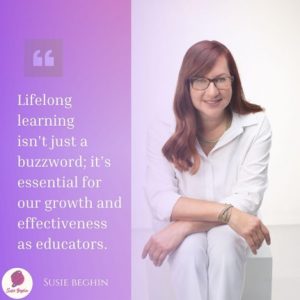
Practical Tips for Embracing Lifelong Learning
During the episode, I shared practical tips on how educators can embrace lifelong learning and make it a part of their daily lives:
- Attend Workshops and Webinars: Participate in local and online workshops and webinars to learn about the latest trends and strategies in early childhood education.
- Engage in Reflective Practice: Take time to reflect on your teaching experiences, identify areas for improvement and set goals for your professional growth.
- Join Professional Networks: Connect with other educators through professional organizations and online communities. These networks provide valuable resources, support and opportunities for collaboration.
- Read Educational Literature: Stay informed by reading books, journals and articles on early childhood education. This helps you keep up with new research and best practices.
- Pursue Advanced Degrees or Certifications: Consider furthering your education through advanced degrees or specialized certifications. This not only enhances your knowledge but also opens up new career opportunities.
The Impact on Children
The benefits of lifelong learning and professional development extend beyond educators. When teachers are well-informed and skilled, they can create richer, more engaging learning environments for their students. This leads to better educational experiences and outcomes for children.
Engaged and motivated educators are more likely to implement innovative practices, use effective teaching strategies and create a positive classroom atmosphere. This fosters a love of learning in children and supports their overall development. By continuously improving their practice, educators can better meet the individual needs of each child and help them reach their full potential.
Takeaways from the Episode
- Lifelong learning is vital for the growth and effectiveness of early childhood educators.
- Professional development empowers teachers to stay updated with the latest educational trends and strategies.
- Practical tips for embracing lifelong learning include attending workshops, engaging in reflective practice, and joining professional networks.
- The benefits of lifelong learning and professional development extend to children, leading to better educational experiences and outcomes.
You can learn more about Anna and her work at @earlyyearsthriving.
Stay tuned for more insightful discussions on early childhood education, parenting, and educator empowerment. Let’s continue to learn, grow, and make a difference in the lives of our students every day.
You can listen to the podcast on your favorite podcast platform, or by clicking here: https://open.spotify.com/show/7Hg7rTtRQggsVSCbbOdvP2?si=paCEPiCRRGK7yOfrTTsh8Q
Building Resilience in Young Children: Helping Them Navigate Challenges and Setbacks
Building Resilience in Young Children: Helping Them Navigate Challenges and Setbacks
by Susie Beghin, RECE, Founder of Alpha’s Discovery Kids
At Alpha’s Discovery Kids, we believe that resilience is a cornerstone of healthy development. Resilience is the ability to bounce back from setbacks, adapt to change, and keep going in the face of adversity. Developing this vital skill early in life helps children navigate the inevitable challenges and setbacks they will encounter. As parents and educators, we play a crucial role in helping children develop the resilience they need to thrive. By fostering resilience in young children, we equip them with the skills to handle stress, overcome obstacles, and maintain a positive outlook even when things get tough. This foundation is essential for their overall well-being and success in life.
Here are a few ideas and strategies for building resilience in young children, ensuring they are prepared to face life’s challenges with confidence and determination.
- Foster a Secure Attachment
A secure attachment between a child and their caregivers forms the foundation for resilience. When children feel safe, loved, and supported, they are more likely to explore their environment and take healthy risks. Consistent, responsive caregiving helps children develop trust and a sense of security.
- Encourage Independence and Problem-Solving
Allowing children to solve problems on their own encourages independence and critical thinking. When children face challenges, guide them through the problem-solving process rather than providing immediate solutions. Ask open-ended questions that prompt them to think about different strategies and potential outcomes. This approach not only builds problem-solving skills but also fosters a sense of competence and confidence.

- Model Resilient Behavior
Children learn by observing the adults around them. Model resilient behavior by demonstrating how to handle stress, setbacks, and disappointment in a positive and constructive manner. Share stories about times when you faced challenges and how you overcame them. By showing children that it is normal to experience difficulties and that they can be managed, you help them develop a resilient mindset.
4. Promote a Growth Mindset
A growth mindset is the belief that abilities and intelligence can be developed through effort and persistence. Encourage children to view challenges as opportunities for learning and growth rather than as threats to their self-esteem. Praise their efforts rather than just their achievements. This helps children understand that their abilities can improve with practice and dedication, making them more likely to persist in the face of difficulties.
5. Teach Emotional Regulation
Helping children understand and manage their emotions is crucial for resilience. Teach them to recognize and name their feelings, and provide them with strategies to cope with negative emotions, such as deep breathing, counting to ten, or taking a break.
- Create Opportunities for Mastery
Providing children with opportunities to succeed and master new skills builds their confidence and resilience. Set achievable goals and celebrate their successes, no matter how small. This sense of accomplishment reinforces the belief that they can overcome challenges and achieve their goals through effort and perseverance.
7. Encourage Positive Relationships
Strong social connections are a key component of resilience. Encourage children to build positive relationships with their peers, teachers, and family members. Teach them the importance of empathy, kindness, and cooperation.
- Establish Consistent Routines
Routines provide a sense of stability and predictability, which is particularly important for young children. Consistent routines help children feel secure and understand what to expect, making it easier for them to cope with changes and challenges. Ensure that routines are flexible enough to accommodate the child’s needs while providing a structured environment that supports their growth and development.
- Encourage Healthy Risk-Taking
Allow children to take age-appropriate risks and learn from their experiences. Whether it’s climbing a new piece of playground equipment, trying a new activity, or making a new friend, healthy risk-taking helps children build confidence and resilience.
- Promote Mindfulness and Relaxation
Mindfulness and relaxation techniques can help children manage stress and build resilience. Teach them simple mindfulness exercises, such as deep breathing, guided imagery, or progressive muscle relaxation. These practices can help children stay calm and focused, even in challenging situations.
Building resilience in young children is a vital part of helping them navigate the challenges and setbacks they will face throughout their lives. At Alpha’s Discovery Kids, we are committed to creating a nurturing environment that supports the development of resilient, confident, and capable children. By fostering secure attachments, encouraging independence, modeling resilient behavior, promoting a growth mindset, and teaching emotional regulation, we can help children build the skills they need to thrive. Through positive relationships, consistent routines, healthy risk-taking, and mindfulness practices, we equip them with the tools they need to face life’s challenges with confidence and resilience.
The ECE Classroom – Recap of Episode 3 – Play-based Learning: Fostering Autonomy and Belonging in the Classroom
The ECE Classroom – Recap of Episode 3 – Play-based Learning: Fostering Autonomy and Belonging in the Classroom
by Susie Beghin, RECE, Founder of Alpha’s Discovery Kids
“Play-based learning is more than just unstructured free play” – Susie Beghin
In the latest episode of my podcast, The ECE Classroom, I had the pleasure of discussing play-based learning with Erica Saccoccio, owner of A Family Tree Child Care. Erica’s passion for early childhood education shone through as she shared valuable insights on making play-based learning both fun and educational.
Play-Based Learning: Fun with a Purpose
Erica emphasized that play-based learning should be engaging and enjoyable for children while also having a clear learning objective. This approach ensures that children are not only having fun but are also developing crucial skills. She highlighted the importance of using intentional materials and providing guidance to children during their play. By carefully selecting materials and activities, educators can create rich learning experiences that foster development across various domains.
Observation-Based Learning
One of the key points Erica discussed was the concept of observation-based learning. She stressed how important it is for educators to observe how children interact with materials and each other. These observations can provide deep insights into each child’s learning style, interests, and developmental needs, allowing educators to tailor their teaching strategies accordingly.
The Role of Teacher Engagement
Our conversation also highlighted the crucial role of teacher engagement and enjoyment in the learning process. When teachers are genuinely involved and enthusiastic about the activities, it creates a positive and dynamic learning environment. This not only enhances the effectiveness of the learning experiences but also makes the process more enjoyable for both teachers and children.
Key Topics Discussed
- The Role of Routines: Erica explained how incorporating play into daily routines can be a great way to engage children and promote their social and emotional development. Routine activities, when infused with playful elements, become more enjoyable and meaningful for children.
- Children’s Autonomy: Allowing children to have a say in their activities fosters independence and confidence. Erica highlighted the importance of giving children choices and respecting their preferences, which helps them feel valued and understood.
- Communicating with Parents: It’s essential to help parents understand the significant benefits of play-based learning. Erica and I discussed strategies for communicating with parents and involving them in their child’s learning journey, ensuring they appreciate the value of play in early childhood education.
My Five Key Principles of Play
During the episode, I also shared my five key principles of play, which are designed to create a safe and nurturing environment for children to learn, explore, and express themselves:
- Follow the Child’s Lead: Allow children to guide their play and explore their interests.
- Engage in Meaningful Conversation: Use play to have meaningful interactions and discussions with children.
- Ask Open-Ended Questions: Encourage children to think creatively and critically by asking questions that don’t have a single correct answer.
- Play at the Child’s Physical Level: Join children in their play environment, whether it’s on the floor, outside, or at a table.
- Combine Free Play and Intentional Play: Balance unstructured play with activities that have specific learning goals.
Takeaways from the Episode
- Play-based learning should be enjoyable and goal-oriented.
- Intentional materials and teacher guidance are crucial.
- Observation-based learning helps in understanding and guiding children.
- Routines can be playful and involve children in decision-making.
- Educating parents about the benefits of play-based learning is vital.
Stay tuned for more insightful discussions on early childhood education, parenting, and educator empowerment. Let’s continue to create engaging, purposeful, and joyful learning experiences for our children.
You can listen to the podcast on your favorite podcast platform, or by clicking here: https://spotifyanchor-web.app.link/e/OPl10EGzNIb
Mindful Parenting: Promoting Calmness, Patience, and Connection with Your Children
Mindful Parenting: Promoting Calmness, Patience, and Connection with Your Children
by Susie Beghin, RECE, Founder of Alpha’s Discovery Kids
Have you ever spent hours scouring the internet for parenting tips, seeking solutions to the daily challenges and uncertainties you face? Parenting can often feel like an overwhelming task filled with constant demands and pressures. As a mother and an Early Childhood Education (ECE) educator, I empathize with these pressures firsthand. That’s why I believe mindfulness is so crucial, not only for children but also for us adults. From my conversations with many parents, I know that mindful parenting, which integrates calmness, patience, and a deep connection with our children, is of utmost importance.
Mindful parenting involves being fully present and engaged with your children, fostering a deep sense of awareness and connection. It’s about slowing down, appreciating the moment, and responding to your child’s needs with empathy and understanding. Mindfulness in parenting helps create a supportive environment where children feel valued, heard, and loved. This approach not only benefits the children but also promotes the well-being of parents, reducing stress and enhancing the overall family dynamic.
In this blog, I’ll share some tips that I hope you find helpful in incorporating mindful parenting into your daily life. These tips are designed to help you nurture calmness, patience, and a stronger connection with your children, fostering a positive and supportive family environment.

Tips to Promote Calmness
- Practice Self-Care: Before you can be present for your children, it’s crucial to take care of yourself. Ensure you are getting enough rest, eating well, and engaging in activities that rejuvenate you. Self-care isn’t selfish; it’s necessary for maintaining your well-being and being the best parent you can be.
- Breathing Exercises: Simple breathing exercises can help both you and your children manage stress and stay calm. Practice deep breathing techniques together, especially during moments of tension. Inhale deeply through the nose, hold for a few seconds, and exhale slowly through the mouth.
- Create a Calm Environment: Your home environment significantly affects your family’s mood and behavior. Keep your living space organized and clutter-free to create a sense of tranquility. Soft lighting, calming music, and incorporating natural elements can also contribute to a peaceful atmosphere.
Tips to Promote Patience
- Practice Mindfulness Meditation: Regular mindfulness meditation can help you develop greater patience. It trains your mind to stay focused on the present moment and reduces impulsive reactions. Even a few minutes of meditation each day can make a significant difference.
- Empathize with Your Child: When your child is acting out, try to see the situation from their perspective. Understanding their feelings and frustrations can help you respond with empathy rather than impatience. Remember, children are still learning how to navigate their emotions and the world around them.
- Set Realistic Expectations: Recognize that children are still developing their skills and may not always meet your expectations. Adjusting your expectations to their developmental level can reduce frustration and help you respond more patiently.
Tips to Promote Connection
- Engage in Shared Activities: Spend quality time with your children doing activities they enjoy. This could be reading together, playing games, or simply talking. Shared activities foster a strong bond and show your children that you value spending time with them.
- Listen Actively: Active listening involves giving your full attention to your child when they speak. Make eye contact, nod, and respond appropriately to show that you are engaged in the conversation. This practice helps your child feel heard and understood.
- Express Love and Appreciation: Regularly express your love and appreciation for your children. Positive affirmations, hugs, and kind words go a long way in building a strong emotional connection. Let your children know that they are loved unconditionally.
Mindful parenting is a journey that requires practice and patience, but the rewards are profound. By incorporating mindfulness into your parenting approach, you can promote calmness, patience, and a deep connection with your children. Remember to take care of yourself, practice empathy, and engage in meaningful activities with your children. These practices will help create a supportive and loving environment where your children can thrive.
For more insights and practical tips on fostering your child’s development through play and mindfulness, I invite you to explore my book, Learn to Play. It’s a comprehensive guide designed to help parents and educators provide the best start in life for their children.
By adopting these mindful practices, we can transform our parenting approach, ensuring that we raise happy, healthy, and well-rounded children.


